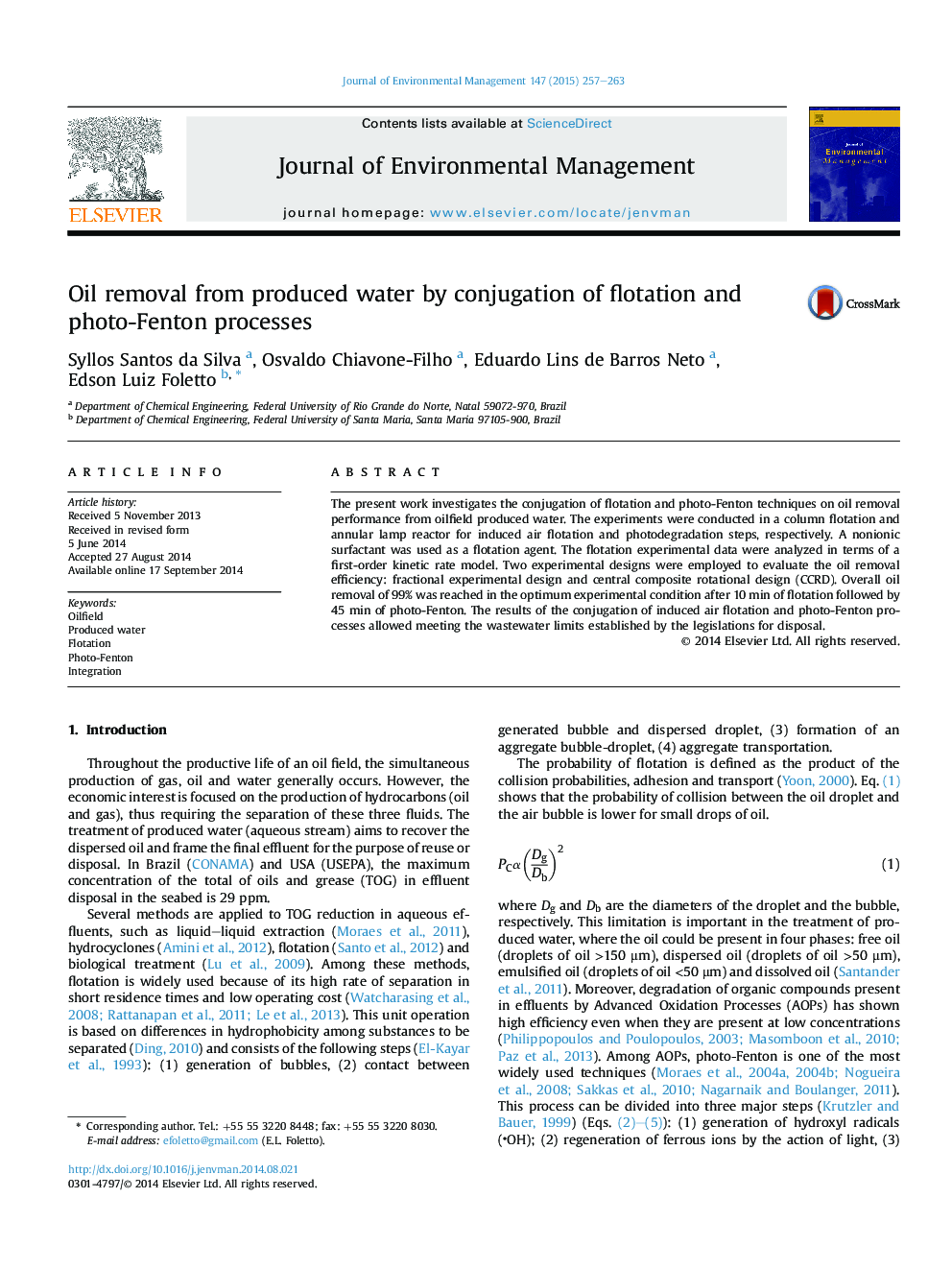| Article ID | Journal | Published Year | Pages | File Type |
|---|---|---|---|---|
| 1055667 | Journal of Environmental Management | 2015 | 7 Pages |
•Reduction of TOG by integration of flotation and photo-Fenton processes.•Experimental designs were employed to evaluate the oil removal efficiency.•Oil removal by flotation was described by a first-order kinetic model.•Integration of processes proved to be effective in reducing TOG in oilfield produced water.
The present work investigates the conjugation of flotation and photo-Fenton techniques on oil removal performance from oilfield produced water. The experiments were conducted in a column flotation and annular lamp reactor for induced air flotation and photodegradation steps, respectively. A nonionic surfactant was used as a flotation agent. The flotation experimental data were analyzed in terms of a first-order kinetic rate model. Two experimental designs were employed to evaluate the oil removal efficiency: fractional experimental design and central composite rotational design (CCRD). Overall oil removal of 99% was reached in the optimum experimental condition after 10 min of flotation followed by 45 min of photo-Fenton. The results of the conjugation of induced air flotation and photo-Fenton processes allowed meeting the wastewater limits established by the legislations for disposal.
